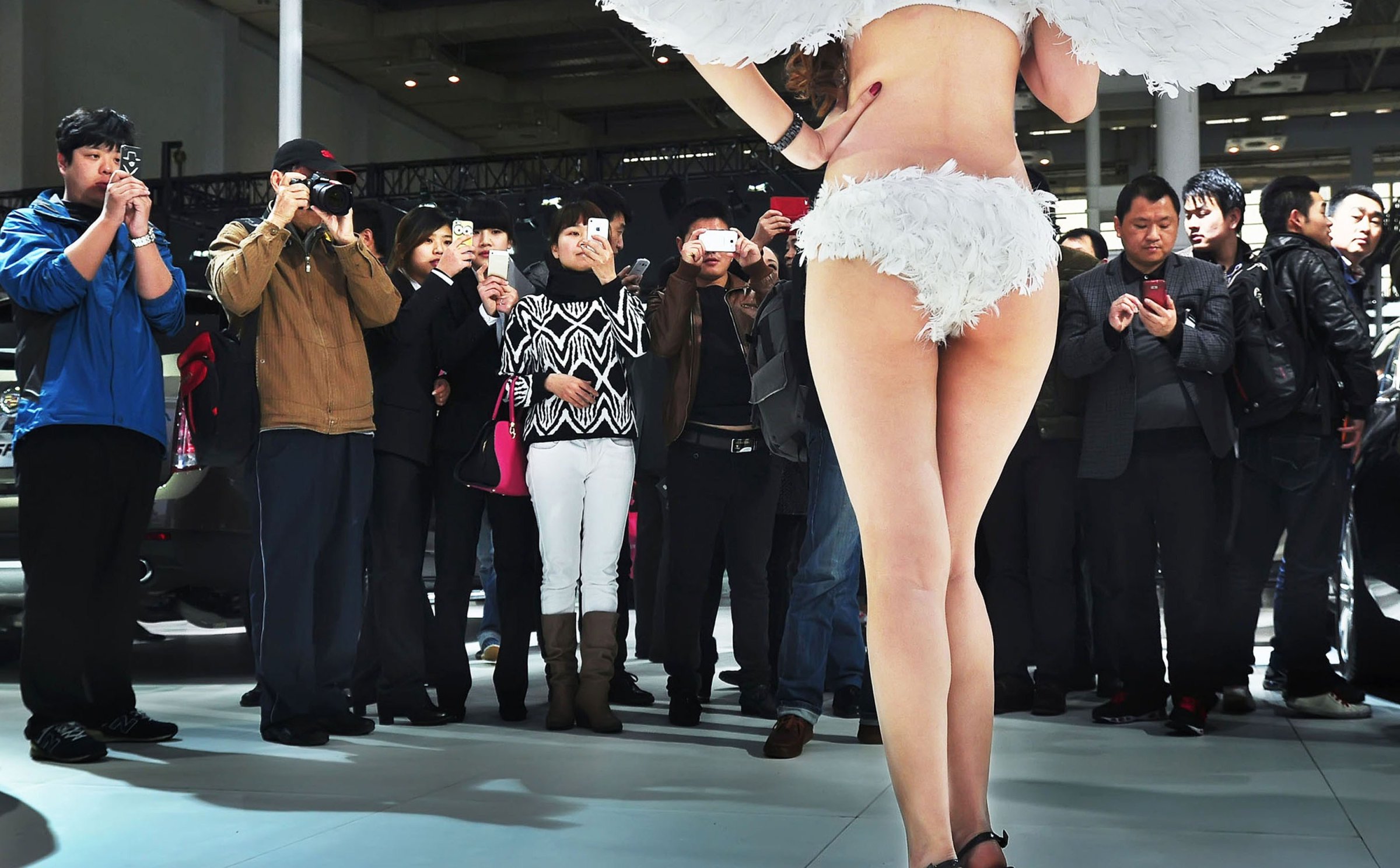
It’s the holiest time of the year. No, not Easter or Passover. It’s the New York International Auto Show, an occasion to worship true gods: horsepower, sheet metal, chrome. If you’re a business journalist working in New York, there’s nothing like attending the press days ahead of the auto show’s public opening. Walking into the cavernous exhibition hall is a lot like walking into Chartres with its spectral light and thick solemnity—except way better because you don’t have to feel guilty about all the terrible things you’ve done and, for the most part, there’s no organ music.
I make the arduous pilgrimage to the far west side of Manhattan every year for the show and always end up, a few hours later, stumbling out dilated and deliriously happy. You might call it auto-erotic-euphoria. But this year was different. As I strolled around the show floor, taking in the ludicrously cute new Jeep and admiring Mercedes’ heavy metal, I found myself feeling uneasy, rather than blissful. Unlike years past, my flânerie wasn’t taking me to my happy place.
The problem, I suddenly realized, wasn’t Land Rover’s anodyne and deeply disappointing Discovery Sport. It was that a fixture of the auto show has become nauseatingly passé. It’s well beyond time that auto shows—and, really, trade shows of any kind including the Consumer Electronics Show and Comic Con—dump their tradition of employing young women in tight dresses and high high-heels to hang around “the product” like a tablecloth in a Flemish still life.
We need to ban the “booth babes.” The auto companies are increasingly being run by some of the smartest, most interesting executives in business (of any kind). It’s time they ditch this outmoded practice and do it as fast as they presumably blurt out that electric cars are a great idea in mixed company. If nothing else, the auto makers can look at the bottom line. Some trustworthy-seeming marketing experts have figured out these women don’t actually help sell anything.
And another thing: It’s awkward. For me. Here I am wandering around, casting a lecherous gaze at this motorcycle or that coupe and I suddenly find myself making eye contact with an exploited model. First of all, the muscles in my face aren’t developed enough to be able to configure themselves to telegraph a message of “I’m not lusting after you, pardon me for looking at you that way. I was lusting after that inanimate object six inches to your left.” More importantly, the practice takes attention away from the point of the show: the cars, which every year get more impressive and more technologically stunning.
I know what some booth babe enthusiasts are going to say: trade shows provide a much-needed employment stimulus to New York City’s struggling acting and modeling community. (This year, I heard one of the guys unfolding tables for a cocktail reception gripe, “This isn’t where I thought drama camp would take me.”) And it’s true that many of the hard-working models act as ambassadors during the show, answering questions and giving succinct history lessons on this or that particular brand. I’m sympathetic.
So I have a proposal. Why not repurpose a segment of the show floor nobody cares about—like, say, the weirdly huge cargo van area in the basement that must only be popular with serial killers from New Jersey—and instead put on a couple of the Theban plays gratis? That way the unemployed actors and actresses can benefit economically from the influx of car lovers like me into the city and the auto show itself can simply be—as it should always—a feast of the moveable.
More Must-Reads from TIME
- Why Trump’s Message Worked on Latino Men
- What Trump’s Win Could Mean for Housing
- The 100 Must-Read Books of 2024
- Sleep Doctors Share the 1 Tip That’s Changed Their Lives
- Column: Let’s Bring Back Romance
- What It’s Like to Have Long COVID As a Kid
- FX’s Say Nothing Is the Must-Watch Political Thriller of 2024
- Merle Bombardieri Is Helping People Make the Baby Decision
Contact us at letters@time.com